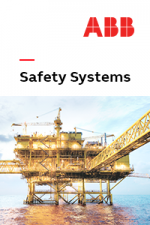- Russian Dam Disaster: Assessing the Cost of Failed Safety Practices
- Analyzing the Human Element of the Russia Dam Disaster
- Turbine 2: How a Track Record of Uncertainty Led to Disaster
- Russian Dam Disaster: A Reckoning for Bypassed Safety
- When Running People Past Their Breaking Point Effects Safety: The Bayer Crop Science Incid…
Why Hazard Education is an Important Plant Safety Critical Success Factor: T2 Laboratories
Learning from previous plant safety incidents large and small is critical to deploying successful process safety practices. From extreme situations where both lives and physical plant assets are lost (consider the 2007 T2 Laboratories chemical plant incident where an explosion and fire killed four people and injured 32 others while leveling the entire plant) to the identification of small safety issues (like the failure of a particular employee to adhere to strict workplace cleanliness regulations), lessons can be learned that will prevent future catastrophes.
In most cases, chemical industry education surrounding appropriate human response is where sound safety practices begin. That’s the purpose behind programs offered through the Chemical Safety Board (CSB), the Accreditation Board for Engineering and Technology, Inc. (ABET) and the American Institute of Chemical Engineers (AIChE). Whether it is in the United States, in Europe or anywhere across the globe, these organizations collaborate and work with academia and local regulatory bodies to help bolster the level of reactive chemical safety education in chemical engineering university curriculums.
According to officials at the Global Summit on Chemical Safety and Security (CHEMSS), education and training are core requirements for developing global chemical safety. An increase in demand for chemicals and the interest in expanding chemical development, production and use, significantly raises the risk of exposure to chemical-related hazards.
“The key is to find common ground about how to comply, using common sense, rather than just following a set of rules, which is only the first step,” said Thomas Spicer, professor of chemical engineering at the University of Arkansas. Instead of having a rules-based approach to safety education, Spicer emphasized the need for a culture-based approach.
“This makes the effort sustainable,” he said, because “culture is about what you do without even thinking about it, such as putting clothes on first thing in the morning before you leave the house. That’s what we hope people will seek regarding safety education.” The key is to make sure graduates understand the concept of inherently safer design.
“Creating a safety culture doesn’t just mean meeting the bare limits of the rules and regulations, it means thinking beyond the scope of the requirements”, said Kimberly Ogden, professor of chemical and environmental engineering at the University of Arizona. It’s also important to understand regulations as they pertain chemical hazards.
Whether a student or an employee working in the field, training, a firm understanding of the safety process, and thinking ahead in terms of the potential impact of an incident should be the goal of any organization.
On the academic front, engineering schools can provide teaching materials and programs that bring elements of process safety into the education of undergraduate and graduate students studying chemical and biochemical products and processes. Students can be trained to understand the safety aspects of their particular area of responsibility and can take a step beyond by realizing how their particular industrial process affects the rest of the people around them. “What if” scenarios can be analyzed so that proactive safety thinking can occur as a natural work habit as the students enter the workforce.
On the business front more must be done in across international process industries to prevent the next major accident. Senior leadership is vital in developing an effective process safety culture. The industry needs to accelerate efforts to develop effective performance metrics that truly reflect the state of risk controls and allow senior management to target resources to the areas of greatest concern. In fact, those companies that foster a culture of a “chronic sense of unease” when it comes to the seriousness of deploying safe plant solutions are those most likely not to experience a major accident.
The avoidance of an incident last year is no guarantee that an accident couldn’t happen tomorrow. Companies need to look for lesser events, typically involving some form of ‘loss of containment’, since the small incidents often lead to bigger complications. Establishing a consistent approach across a wide range of hazard types within the realm of chemicals handled, and the range of leak sizes is difficult work. For example, a simple water leak may not present a major concern (unless it can lead to a chain reaction of other safety-related events). However, a dripping flange joint of a highly toxic chemical needs to be considered a near miss, with immediate action required to address the issue. In this particular case, leak detection technologies can help to simplify the safety engineer’s task of managing a higher degree of safety across plant processes.
To learn more about the importance of industrial process safety education, download the new ABB white paper “Avoiding the 'watermelon' effect: Are we doing enough in the process industry to prevent the next major accident?”


